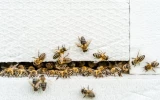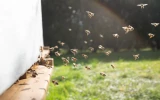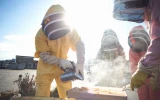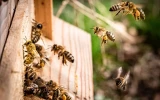Bees Can Die From Heat in a Rather Surprising Way
Heat can kill bees, rather than a common cause of death such as overheating. In this article, we'll explore the unique cause of death from the heat that bees can experience.
When the temperature rises to 42 degrees Celsius, male bees, also called "drone bees," ejaculate themselves and die. This strange behavior happens because these drone bees get stressed, and they explosively ejaculate their abdomen, leading to the death of the bee.
The cause of death is not something usual, but this behavior happens during a heatwave. Something like this can happen, and we'll be dissecting what's happening that leads to such an unusual death.
Summary
- Male bees die from the heat by having their organs explode.
- When the temperature reaches 42 degrees Celsius, bees become unwell, and there is a good chance that they will perish within 2–4 hours.
- To help protect bees from the heat, provide them with water sources, plants, and shelter, and put polystyrene covers on their hives.
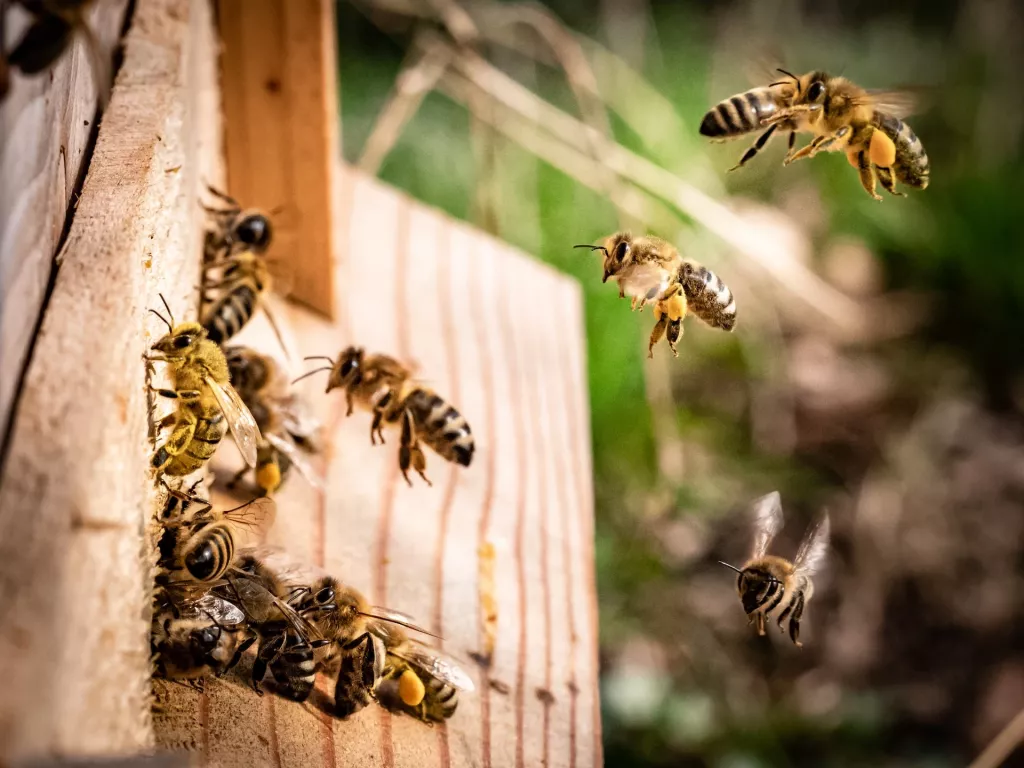
On this page:
What Causes High Temperatures to Kill Bees?
The high temperature can cause a number of problems for bees, including heat exhaustion and dehydration. While these are real causes of death, the uniqueness of this situation lies in the fact that heat can cause male bees to ejaculate themselves.
A news report made by UBC News on February 2, 2022 stated that "bees are explosively ejaculating to death," which shocked the world.
The reason behind the ejaculation is that male bees get stressed out in hot weather, which is a sign of heat exhaustion. When they get too hot, they ejaculate and die of shock.
To make matters worse, the heat wave also affects female bees. Female bees can die from dehydration if they don't find a water source. And as mentioned, when the temperature rises to 42 degrees Celsius, this will become unhealthy for bees, and there's a high possibility that they may die in just 2 to 4 hours.
High Temperature Affects the Health of the Bees
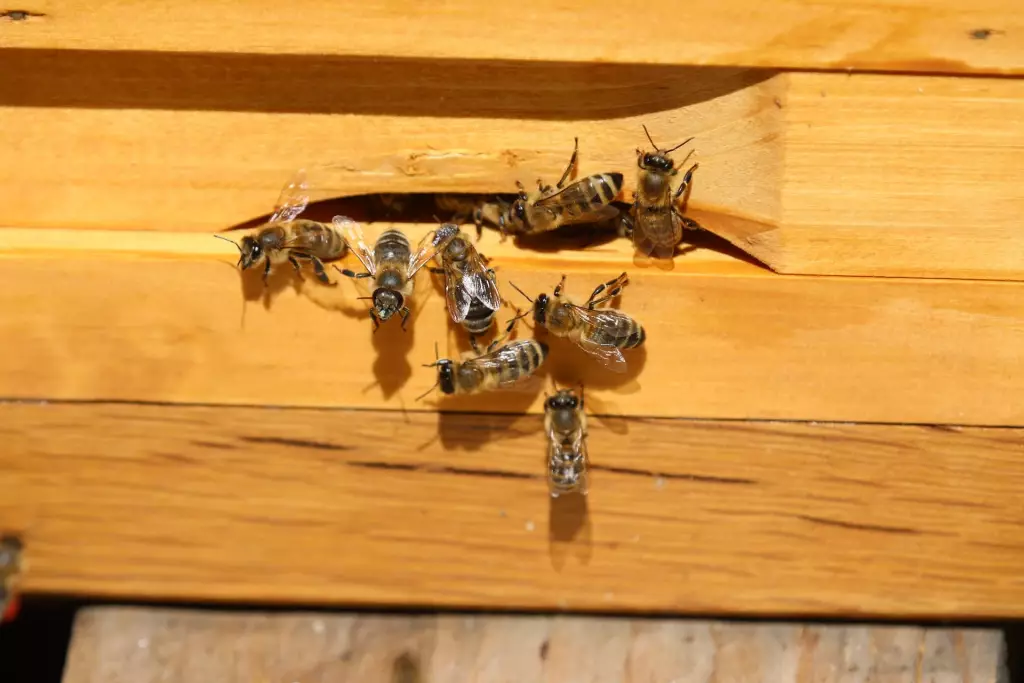
Too much heat can cause bees to die, but that's not the only thing that can happen. The high temperature affects the health of the bees in a number of ways. Here are a few problems that can occur:
Low reproductive output
High temperatures reduce the number of eggs laid by queen bees. This means that if a hive experiences a high temperature, the number of eggs produced will be reduced.
This has a huge effect on the number of bees in a hive and can result in fewer workers, which means that there's not enough workforce to keep the colony going.
Reduced foraging activity
High heat can cause a decrease in the number of bees that leave the hive to collect food. This means that not enough resources are being brought back to the colony, which can lead to a decrease in the number of bees and their ability to survive.
During the hot season, bees are less likely to forage, and there's a high chance that the hive may not be able to collect enough resources.
Difficulty in cooling the hive
Another problem that bees face during a heatwave is their inability to cool their hives. Bees rely on water and ventilation to help keep the hive cool, and unfortunately, they may not be able to find enough water sources or sufficient airflow to help them cool down.
This can lead to a huge decrease in the number of bees that can survive the heatwave.
Male fertility may decline
High temperatures also affect the fertility of male bees. According to research, one-third of a drone's sperm dies within two hours of being at 42 degrees Celsius. This hormone-induced death can lead to a decrease in male fertility and reduce the number of eggs laid by queen bees.
Poor quality sperm
When a queen bee mates with a drone bee, she keeps the sperm in specialized storage in her organ for one to three years. This means that during a heatwave, these stored sperm aren't going to be safe from the high temperature, and there are only some that can survive.
This can lead to poor quality of the sperm, resulting in lower fertility in the hive.
Colonies may disintegrate
When the heatwave is too strong, the hive may disintegrate due to a lack of resources or too few workers. This can be a huge problem for the bees and can cause them to be unable to survive.
High temperatures are definitely a threat to bees, as they can cause death, reduce the number of eggs laid by queen bees, and cause colonies to disintegrate. This means that it's important for people to take care of their bees and help protect them from the heat.
Help Protect Bees From The Heat
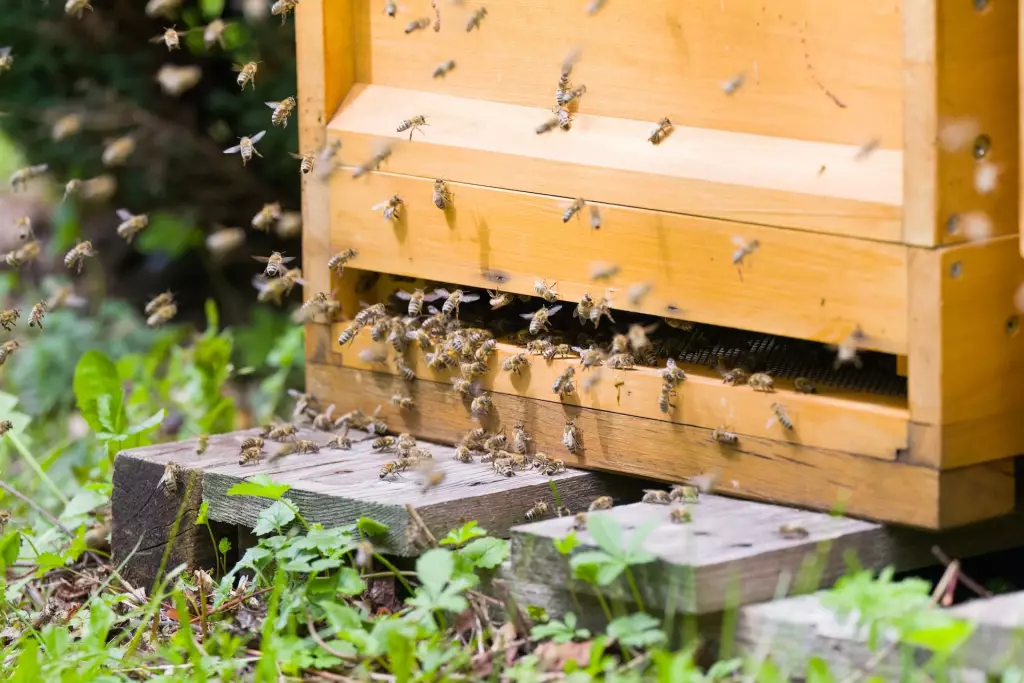
There are several actions we can take in order to help protect bees from the heat. Here are a few of them:
Provide water sources
One of the most important things we can do is provide a water source for bees. This can help keep them cool and hydrated during the hot summer months.
Adding shallow water dishes with rocks in them can help the bees access the water easier, as well as keep them from drowning.
Plant for bees
Since bees are so important to our ecosystem, it's essential to plant flowers and herbs that they love. This can help create a haven for them, while also providing them with the resources they need to survive.
Additionally, planting trees can provide a natural shady area for the bees and keep them cool.
Build a shelter for bees
Providing bees with shelter is also important, as this can help protect them from the heat. Making sure the shelter has good ventilation is also important, as this can help keep the temperature down.
We can also set up hives in shaded areas to provide them with extra protection from the sun. Just remember to stay away from any metal shades, as these can easily get too hot and cause harm to the bees.
Polystyrene covers
Research conducted using polystyrene covers on hives showed that they can reduce the temperature inside by up to 4 °C. Use 2-inch thick covers and a 2 L feeder pail of 1:1 sugar syrup to help reduce the temperature, and make sure to add an entrance hole so that the bees can come in and out.
This is an incredibly effective way of helping protect bees from heatwaves and can help them survive and thrive during the summer months.
These and several more actions can help us protect bees from the heat and make sure that our environment is healthy and sustainable. Bees are essential for pollination, so it's important that we take action and help protect them from the heat.
By taking these proactive steps, we can help ensure that bees are able to survive and thrive during a heatwave while also protecting our environment.
